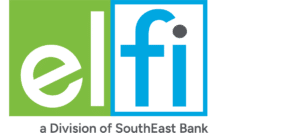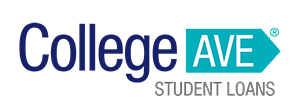If you’re looking for ways to pay for college, you may have heard of the CSS Profile. Many colleges and universities use this form to determine a student’s financial need. It’s essential to know how this profile works and whether or not you should complete it.
Read on to learn more about the CSS Profile and how it can help you pay for school. We’ll also provide some tips on correctly filling out the form.
What is the CSS Profile?
The CSS Profile is a financial aid form administered by the College Board. Over 400 colleges, universities, and scholarship programs use the CSS Profile to determine a student’s need for financial aid, as it provides a comprehensive understanding of the student’s financial background.
The CSS Profile is different from the FAFSA in several ways. For one, the CSS Profile is used primarily by private institutions (but some state universities use it as well) to award institutional aid. Secondly, it asks for more detailed information about a student’s financial situation than the FAFSA. It may make sense to complete the CSS Profile in addition to FAFSA, depending on your chosen school.
In addition to parental income, the CSS Profile requires students to provide their own income and asset information. CSS considers both parental and student contributions when determining need-based aid.
According to Get Schooled, the CSS Profile deadline differs by institution, but deadlines are generally between January 1 and March 1 every year. You’ll need to pay a $25 fee that will cover the initial report that you submit. If you need to submit more than one report, you will have to pay a new fee of $16 for each additional report.
The College Board also has a fee waiver program for students with demonstrated financial need. You may get a free CSS Profile if your family’s total adjusted gross income is $100,000 or less. However, you may still have to pay application fees for each college or university you’re applying to.
Most colleges have their own deadline for submitting the profile, so it’s essential to check with your chosen schools to find out their deadlines.
The 4 Best Companies for Private Student Loans
Our Top-Rated Picks for 2023 Offer Low Rates and No Fees
Option to skip a payment once a year

In-school deferment available if you return for another degree

Optional $25 payment plan during school to reduce interest after graduation

1% Cash Back Graduation Reward program
Fixed Rate
Variable Rate

Fixed Rate
Variable Rate
Eligible Schools
The CSS Profile is used by over 400 colleges and universities, both public and private. Some of the schools that use the form include:
- Duke University
- Georgetown University
- Harvard College
- Norwich University
- Santa Clara University
- Yale University
- Colorado College
- University of Chicago
- Boston University
- Cornell University
If you’re unsure whether your school uses the CSS Profile, you can check The College Board’s Participating Institutions and Programs for the complete list. Many schools will also have information about the form on their financial aid webpage.
What is the College Board?
The College Board is a not-for-profit organization that provides educational opportunities for students and families. The organization also administers tests, including the SAT and AP exams. The SAT is a standardized test that many colleges use as part of their admissions process, while the AP exam is taken by high school students who want to earn college credit for their coursework.
The CSS College Board’s mission is to “connect students to college success and opportunity.” They aim to do this by helping students develop the knowledge, skills, and values they need to succeed in school and beyond. In addition to the CSS Profile, the College Board also offers fee waivers for low-income students who want to take the SAT or AP exams.
How does the CSS Profile help you pay for school?
Say you’re a high school senior who’s just been accepted to your dream college. Unfortunately, you didn’t get any merit-based scholarships. You’re unsure how you will pay for tuition, room, and board.
Your parents are already helping but they can’t contribute much more to your education. You’ve decided to fill out the CSS Profile to see if you can get need-based financial aid.
There are several benefits of filling out the CSS Profile:
- It can help you get more need-based financial aid than you would with the FAFSA alone.
- Some colleges and universities require it, so it’s necessary if you want to be considered for need-based aid at those schools.
- Families with adjusted gross incomes under $100k qualify for a fee waiver and can complete the CSS profile at no cost.
If you think you might be eligible for need-based financial aid, the CSS Profile is worth completing. It could make the difference between being able to attend your dream school or not.

Free 13-page eBook: How to Pay For College
Download instantly with just one click
Free eBook: How to Pay for College
Download instantly with
just one click

Type of information included in the CSS profile
The CSS Profile requires detailed information about your family’s finances, including income, assets, and debts. You will also be required to supply information regarding your parents’ employment status and level of education. This data is needed to compute your Expected Family Contribution (EFC).
Your EFC is the amount of money your family is expected to give to your education. It depends on various circumstances, including income, assets, family size, and the number of college-aged children. The CSS Profile considers some aspects that the FAFSA does not. This means that if you submit both forms, your EFC may differ.
Keep in mind that you’re not required to pay your EFC. It’s simply the amount the college or university expects your family to contribute. If you don’t think your family can afford to pay your EFC, you can appeal for more financial aid.
Who should use the CSS profile?
Even if you don’t think you’ll qualify for need-based aid, you should still complete the CSS Profile if your school uses it. Some colleges and universities require it, so you’ll need to complete the CSS profile to be considered for institutional grants and other aid at those schools.
If you’re not sure whether or not you should complete the profile, here are a few things to consider:
- Are you eligible for need-based financial aid?
- Is the profile required by your college or university?
- Do you think your family can afford to pay your EFC?
- Are you willing to provide detailed information about your family’s finances?
If you answered yes to any of these questions, the CSS profile may be right for you. Remember, it’s free to fill out and could help you get the financial aid you need to attend college.
Make sure to check with your college or university to find out their specific CSS profile deadline. You don’t want to miss out on any financial aid because you didn’t submit your forms on time.
How to create a CSS profile
It’s important to ensure you are entering accurate information on the form, so you’ll likely need to have tax returns, account statements, and W-2’s handy. Incorrect or incomplete information could result in a lower financial aid award from your college, and once you’ve submitted the form you can’t change any answers electronically.
Here’s how to get started with the CSS College Board application process:
- Create an account on the College Board website.
- Enter your personal information, including your name, address, and date of birth.
- Select the colleges or universities you’re interested in attending.
- Choose which year you plan to enroll in college.
- Answer questions about your family’s finances, including income, assets, and debts.
- Provide information about your parents’ employment status and education levels.
- Save and submit your application.
The CSS Profile can be time-consuming to complete, but it’s worthwhile to submit it (along with the FAFSA) if your school is eligible. If you have any questions about the form or how to fill it out, you should contact your college’s financial assistance office for help. They’ll be able to provide guidance and answer any questions that you may have.
We can help you find the best way to finance your education
Most students worry about how they’re going to pay for college. Between tuition, room and board, and other associated costs, the price of higher education can seem out of reach. But there are ways to get help paying for school, and one of the most helpful is through the CSS profile.
If you’ve completed the CSS Profile and the FAFSA but still need additional funding to close the gap, Purefy’s rate comparison tool can help. You’ll just complete a brief form and undergo a soft credit pull (which doesn’t affect your credit score) to see real rates from top lenders.
Need a Private Student Loan? Check Out the Top Lenders of 2023.
Compare interest rates and perks to find the best lender for you.
















